Spring is a great time to be in DC (when it isn’t raining…!). The day started with a typical spring morning in DC and maybe some slight mechanical issues with a certain dishwasher, but we made the ~8 min commute to the Earth and Planets Lab campus without a hitch soon after.
After coffee and light snacks, the morning session was ripe with ienteresting talks from the transiting exoplanet community, which was nice to see. Eventually we broke for lunch where we had some sick mediterranean food and engaged in some colorful dicussions on asteroid mining.
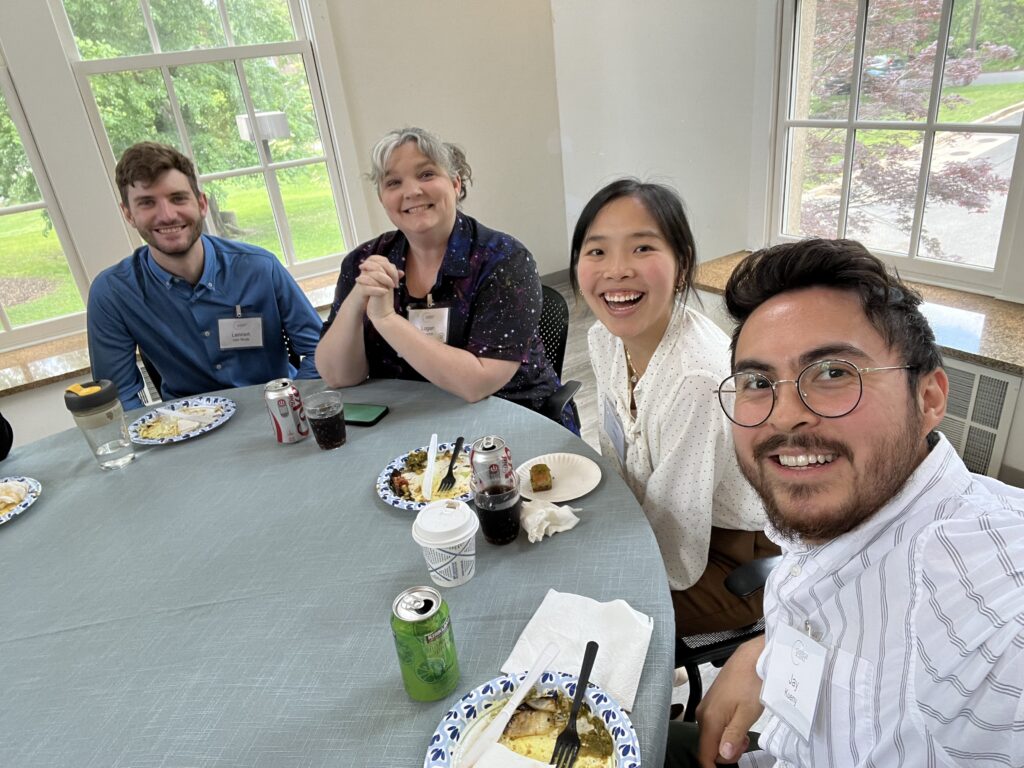
Immediately after lunch Alycia gave her talk on the new upcoming spectroscopic instrument, MagNIFIES. I didn’t realize that this instrument is essentially GMTNIRS and will be installed on one of the Magellans as we wait for GMT, great plan.
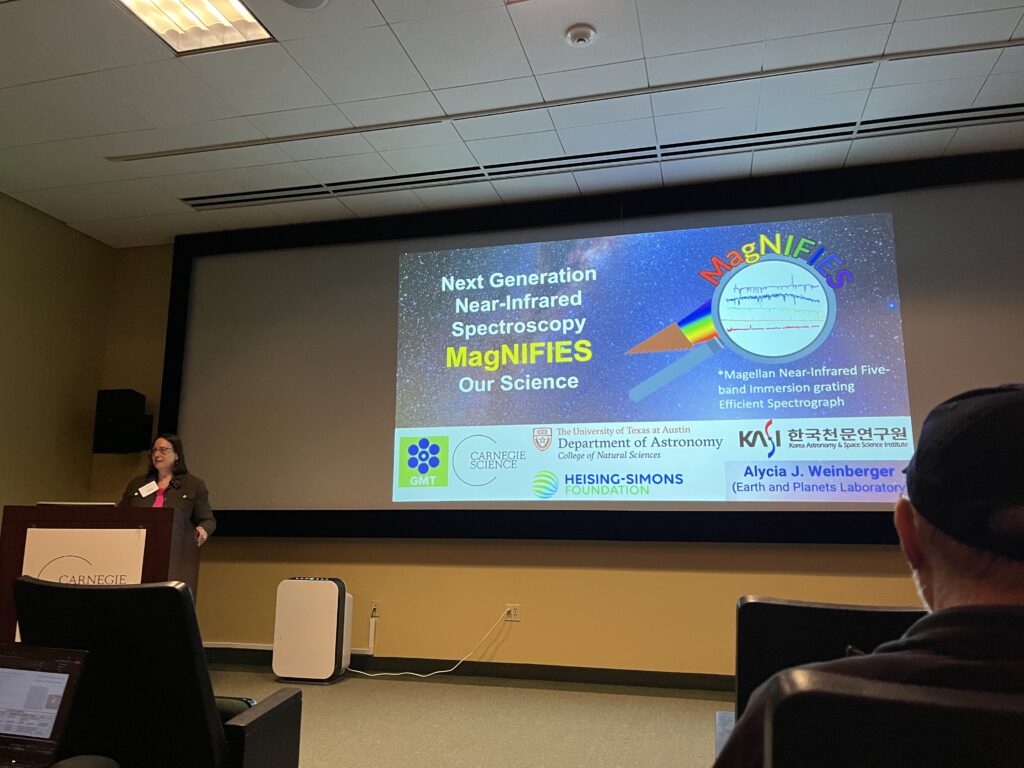
We were all treated with a glimpse of CAD Alycia…! Don’t be fooled, but if you suspect that you are, CAD Alycia is apparently ~4 inches taller than her true height. So that’s the distinguishing feature, FYI.
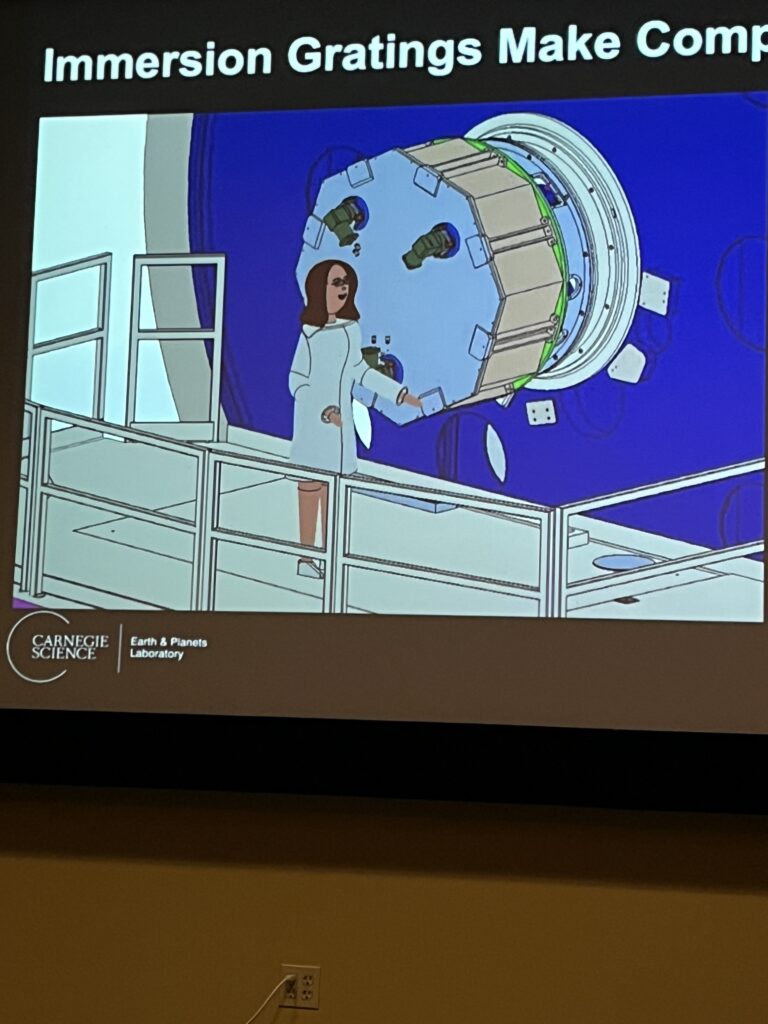
The rest of this session detailed new and upcoming instruments for the Magellan telescopes and was (for me) the most interesting session of the day. In particular, there was a talk on a new instrument (LIGHTSPEED) that makes use of one of the new Hamamatsu qCMOS cameras that had me on the edge of my seat…! Those cameras are impressive (and cheap) pieces of imaging technology.
In the afternoon, a subset of the attendees coalesced and had a nice discussion on efforts towards exoplanet science at Magellan. It was recognized that one of the current drawbacks for the community is a shortage of ports for all the various instruments, and there was some discussion about moving LDSS3 to a permanent position on one of the reinforced auxilary ports in addition to removing Four Star from the other Clay nasmyth platform.
Jialin, being the talented multitasker that she is, juggled participating in the discussion with managing her final exams.
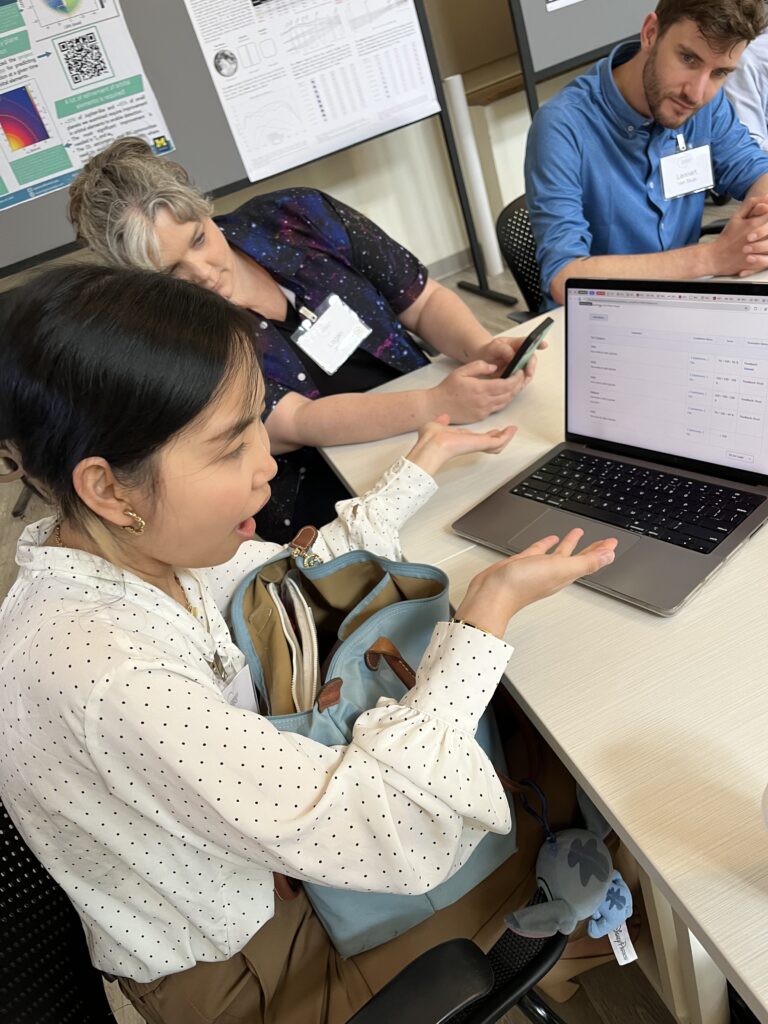
After the breakout sessions, I had a super meeting with Alycia and her postdoc Daniel about our most recent efforts studying the dust that makes up the HR4796 disk. Recall, there isn’t a single grain model that can explain both the scattering function *and* and spectrum across all the data collected on this system so far. Our most recent observing runs have given us some really good data that should really help solve this problem.
We ended conference activities by eating Ukrainian food at a local restaurant with Lennart van Slujis, who is from the Netherlands (now a Univ. of Michigan postdoc) and apparently has attended lectures given by Sebastiaan. Astro is such a small world.
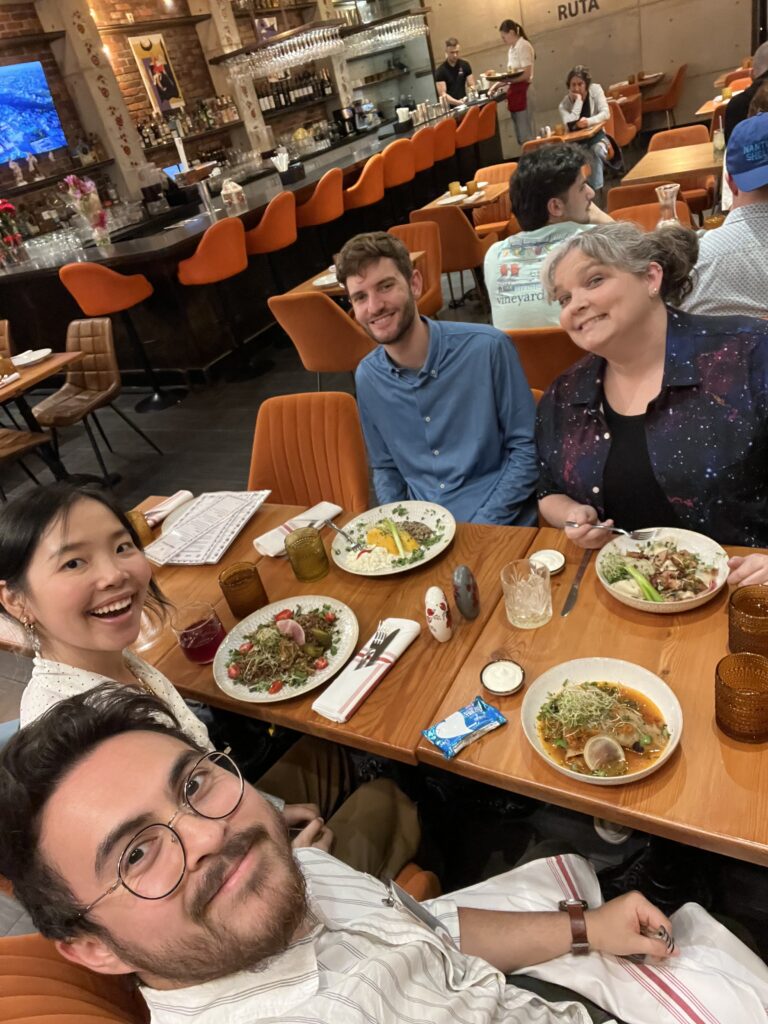
We would like to thank Alycia very much for her hospitality and hosting us during the duration of this conference. Of course, Jialin and I quickly found that the best way to end the work day at Alycia’s house was with a few intense bouts of air hocky and foosball!
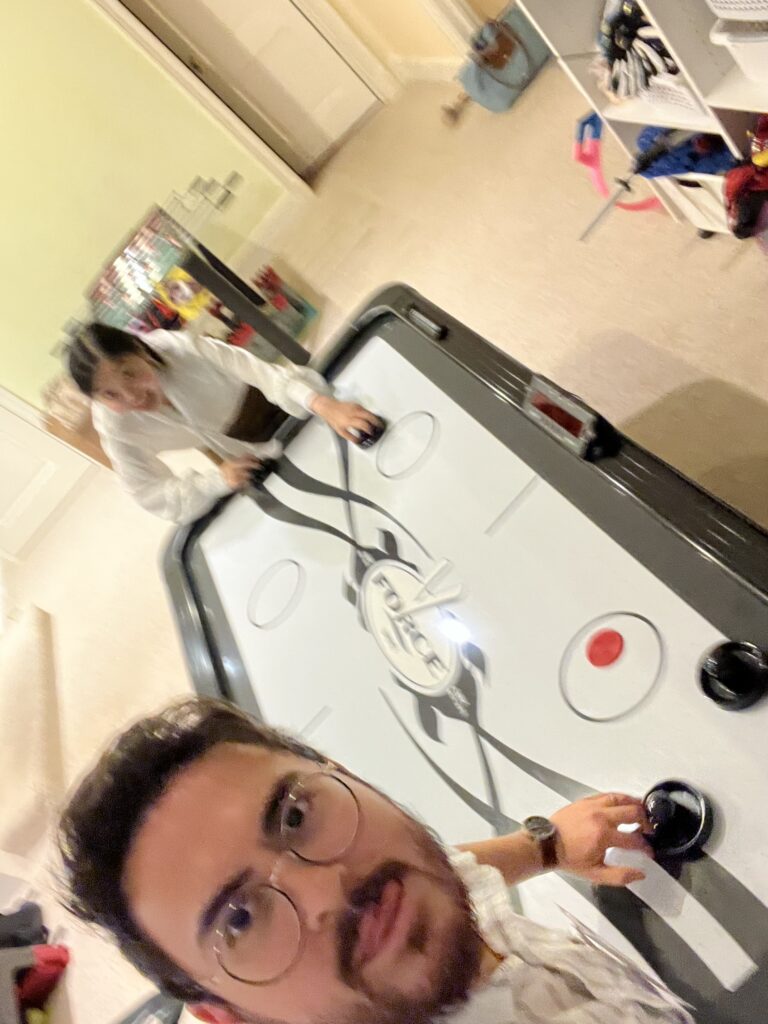
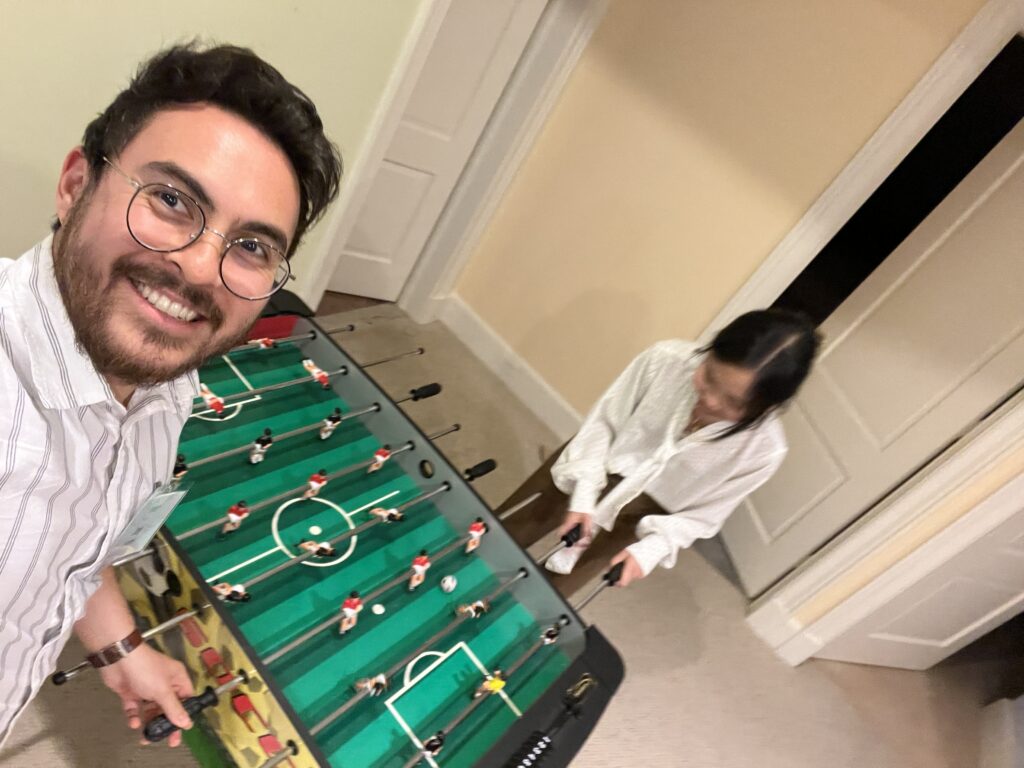
Song of the Day
How about some early 2000’s action courtesy of John Mayer?